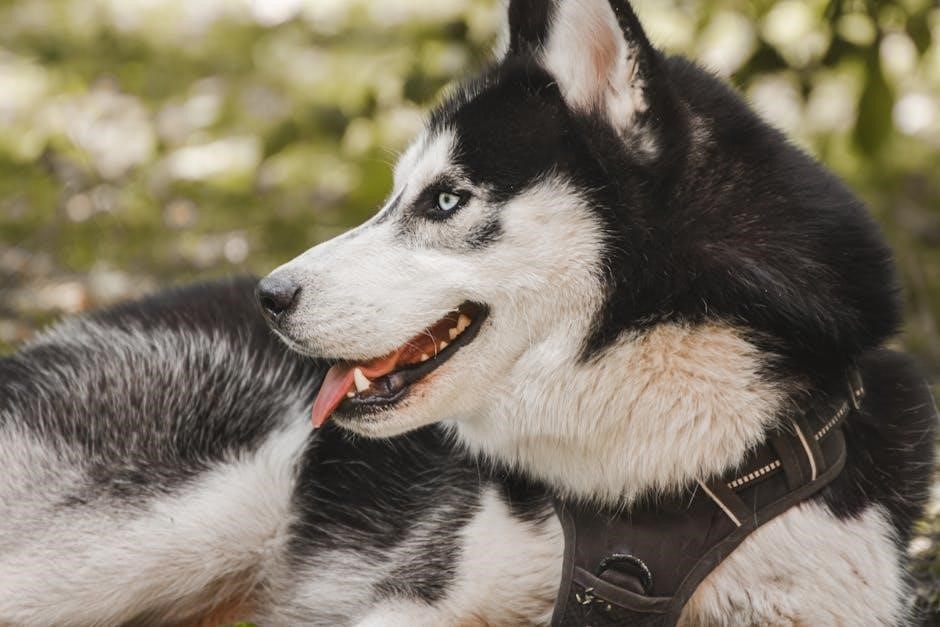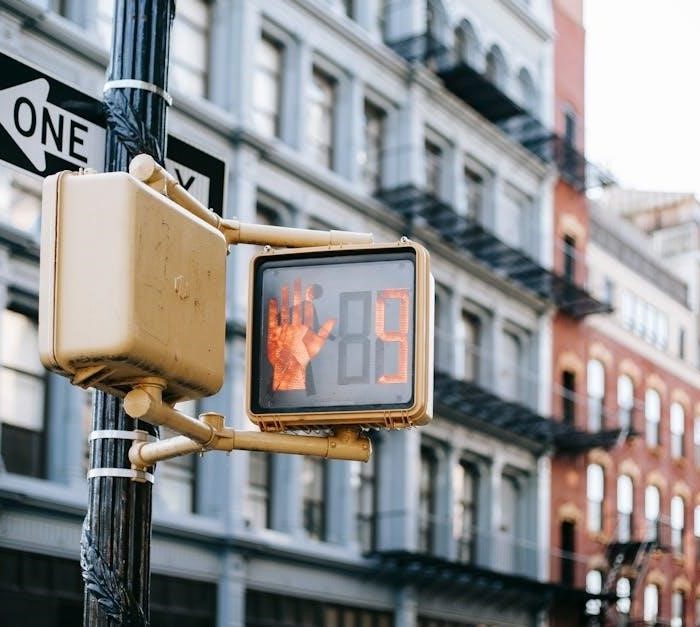Properly sizing a dog harness is crucial for comfort and safety. This guide helps you measure accurately, choose the right type, and ensure a perfect fit for your dog.
1.1 Why Proper Harness Sizing Matters
Proper harness sizing is vital to ensure your dog’s comfort and safety. A well-fitting harness prevents chafing, restricts unnecessary movement, and avoids putting pressure on sensitive areas. An ill-fitting harness can lead to discomfort, skin irritation, or even injuries. Correct sizing ensures optimal distribution of force, making walks enjoyable and stress-free for both you and your dog. Accurate measurements are essential for their well-being.
1.2 Brief Overview of Harness Types
Dog harnesses come in various styles, each designed for specific needs. No-pull harnesses help with leash training, puppy harnesses are lightweight for young dogs, and specialty harnesses cater to unique requirements like hiking or medical conditions. Understanding your dog’s lifestyle and behavior helps choose the right type, ensuring comfort and functionality. Each style offers distinct features to suit different preferences and activities.
How to Measure Your Dog for a Harness
Accurately measuring your dog’s chest girth and neck circumference with a flexible tape measure ensures the best fit. Proper sizing is essential for comfort and safety.
2.1 Measuring Chest Girth
To measure your dog’s chest girth, wrap a flexible tape measure around the widest part of their chest, just behind the front legs. Ensure the tape is snug but not tight, allowing two fingers to fit comfortably between the tape and your dog’s skin. This measurement is critical for determining the correct harness size and ensuring proper fit and comfort for your dog.
2.2 Measuring Neck Circumference
To measure your dog’s neck circumference, wrap a flexible tape measure around the base of their neck, just below the narrow part where a collar would sit. The tape should be snug but allow space for two fingers to fit comfortably. This ensures the harness won’t restrict movement or cause discomfort. Accurate neck measurement is essential for a secure and comfortable fit, especially for breeds with thicker necks or specific harness types.
2.3 Understanding Weight and Body Type
While weight provides a general guideline, your dog’s body type is crucial for accurate harness sizing. Breeds like Bulldogs and Greyhounds, despite similar weights, have different chest and neck structures. Measuring girth and neck ensures a proper fit, preventing discomfort or restricted movement. Always consider your dog’s unique shape and size for the best harness fit.
Dog Harness Size Chart by Breed
Breed-specific size charts help match harnesses to your dog’s natural proportions. From Chihuahuas to Great Danes, accurate measurements ensure comfort and safety, catering to each breed’s unique size needs.
3.1 Standard Size Ranges
Standard harness sizes range from XXS to XL, based on chest girth measurements. These ranges are designed to accommodate various dog breeds and body types. For example, XXS suits dogs with a chest girth of 8-10 inches, while XL fits larger dogs with 25-38 inches. Always check specific charts for accurate sizing.
3.2 Breed-Specific Size Recommendations
Breed-specific sizing ensures optimal fit, as different breeds have unique body structures. For instance, Bulldogs may require a larger harness due to their broad chests, while Greyhounds need a slimmer fit. Refer to breed-specific charts to match your dog’s size accurately, ensuring comfort and proper support for their specific build and needs.
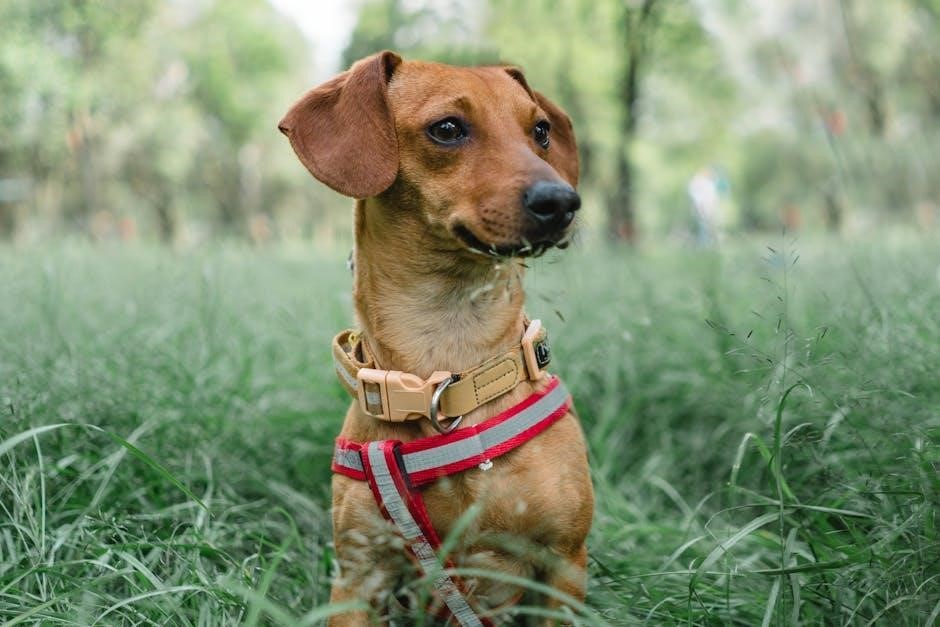
How to Use a Harness Size Chart
Match your dog’s chest girth, neck, and weight to the chart. Ensure measurements align with size ranges for optimal fit, comfort, and mobility, and adjust as needed.
4.1 Combining Measurements for Accuracy
For precise sizing, combine your dog’s chest girth, neck circumference, and weight. Align these measurements with the size chart, ensuring they fall within the recommended ranges. If your dog’s chest girth and neck measurements suggest different sizes, opt for the larger size. Consider your dog’s body type and weight to refine the fit further. If unsure, contact customer service for guidance.
4.2 Adjusting for Comfort and Fit
Properly adjusting your dog’s harness is essential for both comfort and safety. Ensure all straps are snug but not too tight, allowing for a full range of motion. You should be able to fit two fingers comfortably between the harness and your dog’s skin. Regularly check the fit, especially during walks, to prevent any discomfort or restriction. If unsure, consult customer service for guidance.
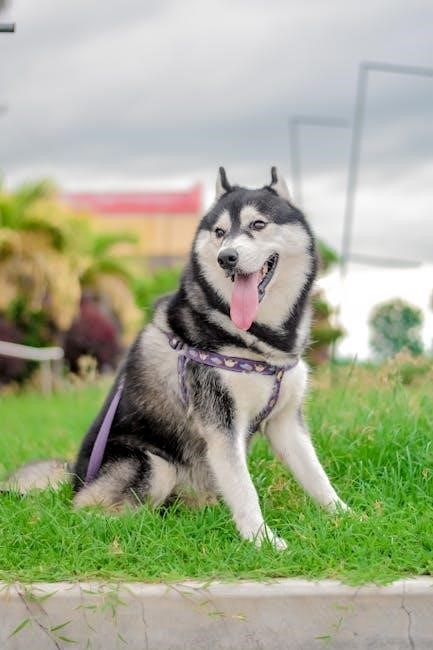
Choosing the Right Harness Type
Selecting the ideal harness type depends on your dog’s behavior, size, and specific needs. No-pull, puppy, and specialty harnesses cater to different requirements, ensuring comfort and control while walking.
5.1 No-Pull Harnesses
No-pull harnesses are designed to reduce pulling behavior by distributing force across the chest and shoulders. They often feature front-clip attachments, allowing better control during walks. These harnesses are ideal for strong or energetic dogs, providing a comfortable and effective solution to minimize pulling without causing discomfort or injury to the dog.
5.2 Puppy Harnesses
Puppy harnesses are specifically designed for young dogs, offering a snug yet gentle fit. They are typically made from soft, breathable materials to ensure comfort as puppies grow. These harnesses often feature adjustable straps to accommodate growth and provide a secure fit. Choosing the right puppy harness size ensures your young dog stays comfortable and safe during walks and playtime.
5.3 Specialty Harnesses
Specialty harnesses cater to dogs with unique needs, such as no-pull designs for strong pullers or harnesses for dogs with medical conditions. These are crafted with specific features like reinforced straps or padded chest plates for added support. Proper sizing is essential to ensure effectiveness and comfort, making them a tailored solution for dogs requiring extra care or control during walks.
Common Mistakes to Avoid
Ignoring your dog’s body type and relying solely on weight can lead to poor fit. Ensure accurate measurements and avoid sizing errors for optimal comfort and safety.
6.1 Ignoring Body Type
Ignoring your dog’s body type can lead to a poor fit. Dogs with broad chests, narrow builds, or deep ribcages require tailored sizing. For example, a 40-pound Bulldog and Greyhound differ significantly in shape. Failing to account for body type may result in a harness that’s too tight or too loose, causing discomfort or safety risks. Always consider your dog’s unique structure to ensure proper fit and comfort.
6.2 Relying Solely on Weight
Relying only on weight for sizing can lead to an ill-fitting harness. Dogs of the same weight often have different body types, such as a stocky Bulldog versus a lean Greyhound. Weight alone doesn’t account for chest girth or neck size, which are critical for proper fit. Always measure your dog’s chest and neck to ensure accuracy and comfort, rather than depending solely on weight guidelines.
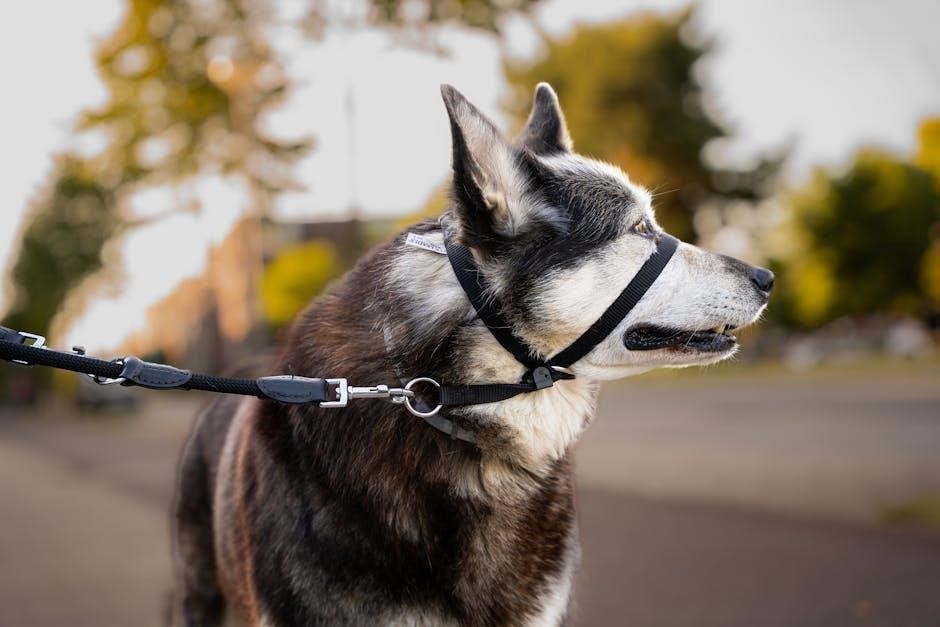
Adjusting the Harness for a Perfect Fit
Ensure a snug fit by adjusting straps, allowing two fingers of space. Proper adjustment prevents discomfort and ensures your dog’s safety and mobility during walks or activities.
7.1 Tightening and Loosening Straps
Adjusting the harness straps ensures a secure fit without restricting movement. Start by loosening all straps, then gently tighten them, ensuring two fingers fit between the harness and your dog’s body; Check the chest plate for snugness and ensure the back strap aligns with your dog’s spine for optimal comfort and control during walks.
7.2 Checking for Comfort and Mobility
After adjusting the harness, ensure your dog can move freely without restriction. Check for snugness by fitting two fingers between the harness and their skin. Observe your dog’s posture and gait; if they show signs of discomfort or difficulty moving, further adjustments are needed. A well-fitted harness should allow full range of motion and prevent skin irritation or breathing difficulties.
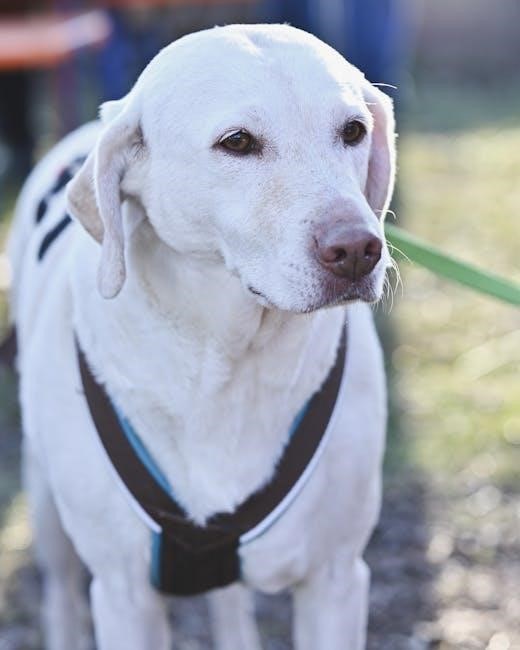
Tips for Dogs Between Sizes
For dogs between sizes, opt for the larger size for comfort and consider consulting customer service for personalized recommendations.
8.1 When to Size Up or Down
If your dog’s chest measurement falls between two sizes, choose the larger size for a wider chest or the smaller size for a narrower build. Always prioritize comfort and mobility. If unsure, consult the size chart or contact customer service for guidance to ensure the best fit for your dog.
8.2 Consulting with Customer Service
If your dog’s measurements fall between sizes or you’re unsure about the fit, consulting with customer service can provide clarity. They can help determine the best size based on your dog’s specific measurements and breed. Be prepared to share accurate girth, neck, and weight details for personalized recommendations to ensure a comfortable and secure fit for your dog.
Proper sizing ensures your dog’s safety and comfort. Use guides and customer service to find the perfect fit, making measuring a priority for their well-being.
9.1 Final Thoughts on Harness Sizing
Proper sizing is essential for your dog’s safety and comfort. Always measure accurately, considering girth, neck, and body type. Avoid relying solely on weight, as breeds vary. Use size charts as a guide but adjust based on your dog’s specific needs. If unsure, consult customer service. A well-fitting harness ensures comfort and mobility, making walks enjoyable for both you and your dog.
9.2 Encouragement to Measure Accurately
Accurate measurements are key to your dog’s comfort and safety. Take time to measure chest girth, neck, and consider body type. Proper fit prevents injuries and ensures mobility. It’s worth the effort for your dog’s well-being and happy walks. A well-fitted harness makes all the difference in their comfort and your peace of mind.
